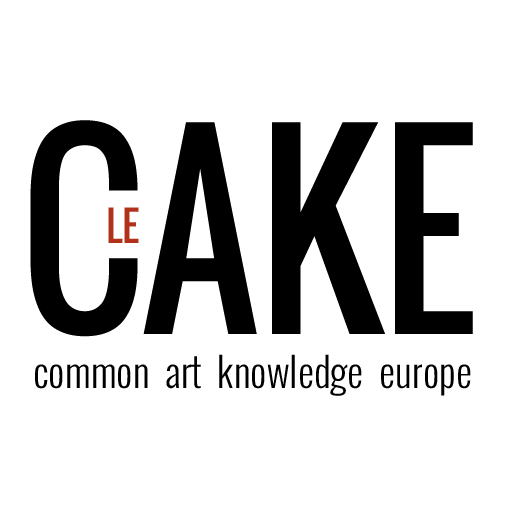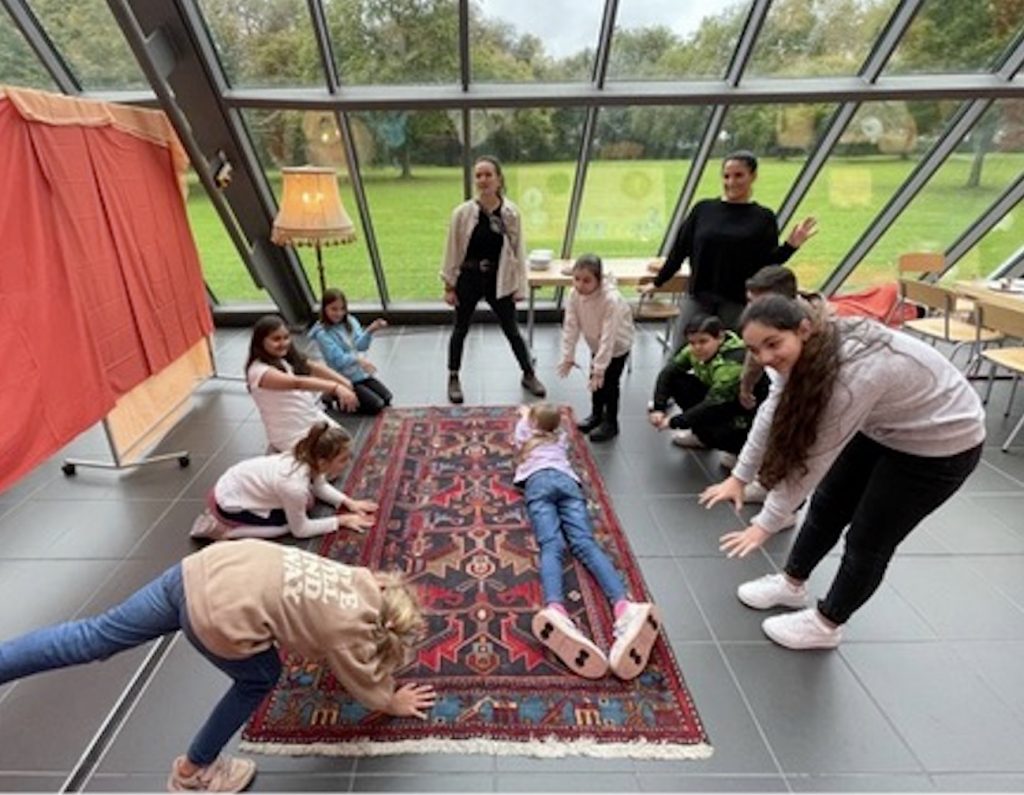2a. Designing a performance on board game principles
Consol Theater and Transplanisphère involved both senior designers and young contributors (the Young Ambassadors of both teams). 5 people joined the task group.
To design the game, the team started from a need: ‘to create an artistic, educational and convivial experience for a group of people taking part in a festival on ecological issues’. We agreed on the fact that we needed to design a protocol easy to understand by the audience, as we had limited duration (15 minutes) to implement it.
For inspiration, we looked at the popular card game Climate Fresco. Many well-known games are based on cards, so most people are familiar with the basic idea of drawing a card and taking action. The task group agreed that the first part of the protocol should involve a card game designed to educate the audience. However, the challenge was to make sure the knowledge shared was presented in a way that didn’t feel depressing or lead to a sense of powerlessness, which is often the reaction to climate-related information.
To achieve this, the group decided to combine the card game with two elements: a social, friendly interaction and a creative, fun theatre game. The goal was for participants to leave the event feeling satisfied, having contributed to a collective effort to address the complex emotions surrounding the climate crisis. This shared experience would offer a creative response to these mixed feelings, helping to reframe the issue in a more hopeful and collaborative light. In this way, the small contribution from each participant could serve as a symbol of our collective responsibility in driving the societal change needed to address the climate crisis.
Combining theatre methodology and gamification, we divided the game into scenes with specific objectives:
Opening: “Passage Moment” to Centre Participants. Begin with a moment of transition, guiding participants into the space and helping them focus. Integrate a ceremonial ritual, such as hand washing, to mark the shift from the everyday to the intentional, signalling the start of the gathering.
Second Scene: The Ceremonial Table. Gather around a large table that embodies the ceremonial dimension of the event. This table serves as both a space for connection and a symbol of the collective goal—pursuing a systemic approach to ecology and sustainability. A card game is introduced, combining fun with knowledge sharing. The table is also adorned with cakes, each representing a key ecological theme (air, water, etc.). The individual cake pieces symbolise subtopics within each main area (one card is under every piece). As participants take a piece, they not only learn about the subject but are also invited to contribute their thoughts and ideas.
Third Scene: Creative Expression through Theatre. Move to a smaller stage where participants transform knowledge into creative and emotional expression. Here, the exchange of ideas and information takes on a more artistic form, encouraging participants to engage with the material in a deeper, more personal way.
Closing: Collective Energy Expression. Conclude with a moment that channels the collective energy of the group. This final act symbolises the shared commitment to the cause and solidifies the connections made during the event.
Methodological point #2
To design the game rules and the protocol, the group alternated between individual and group sessions:
- group sessions online to brainstorm, explore tracks, and stimulate creativity
- individual work to prepare the specific contents (like deck of cards, theatre games…)
Group sessions after group sessions, the contributors could feel the work-in-progress and feel stimulated by the collective energy.
The division into scenes also helps to dispatch work and allows a clear parallel workflow.
The contributors benefited from the previous research work done during the first year of the LeCAKE Train project, so the necessary scientific knowledge was already there to develop the contents.
2b. Ecological considerations
We opted for a setup that is as simple as possible, relying on existing elements. The performance’s set design primarily uses furniture typically found in any public venue, such as tables, chairs, and rugs. Depending on the location, movable partitions may be helpful to isolate the performance area, creating a sense of privacy and ensuring participants feel comfortable and shielded from outside attention.
Additionally, to personalise the setup, other elements can be added, such as lighting or decorative accessories. Finally, the costume for the Master of Ceremonies—referred to as the Shaman—should have a unique character but can be crafted using clothes and accessories from existing wardrobes.
Two specific elements, however, are important to prepare and require special fabrication:
- The cakes: It is essential to provide round cakes to match the shape of the cards. They should be designed to be cut into 12 equal slices.
- The cards: These should be printed using the provided PDF files and placed beneath the cakes.
All that being said, it is crucial to remember that the main CO2 emissions of a perfomance usually come from the mobility of the audience. The simplicity of the set-up allows to “perform” LeCAKE Ceremony in many different locations like schools, public venues that are closed to local audiences.

